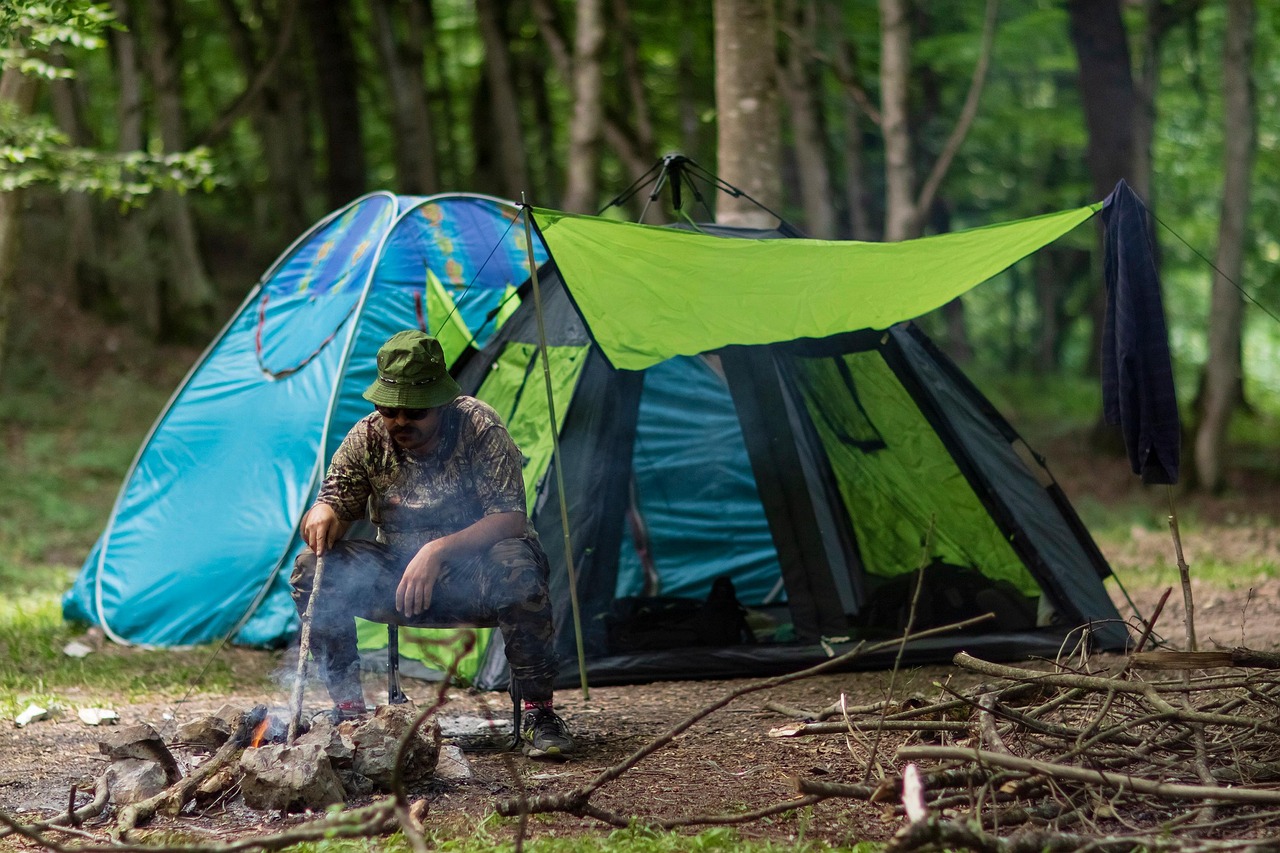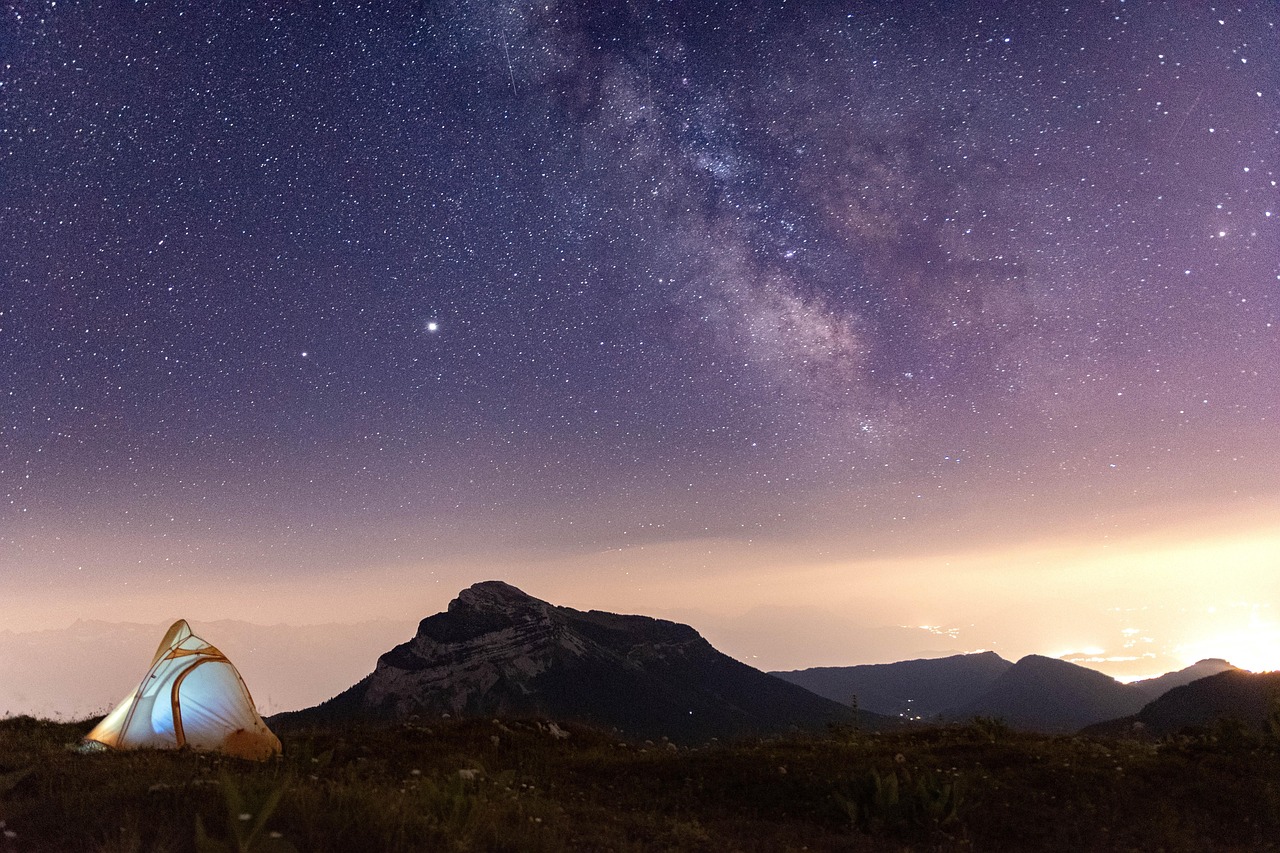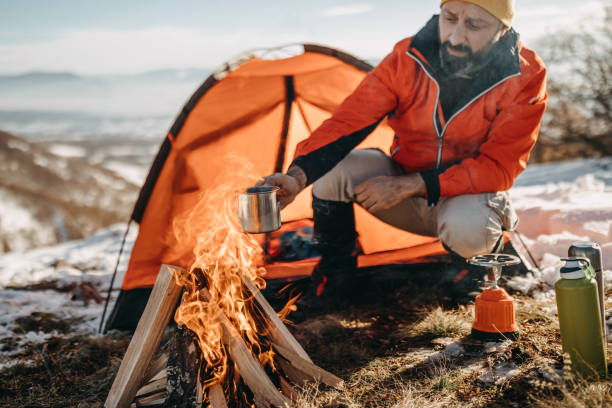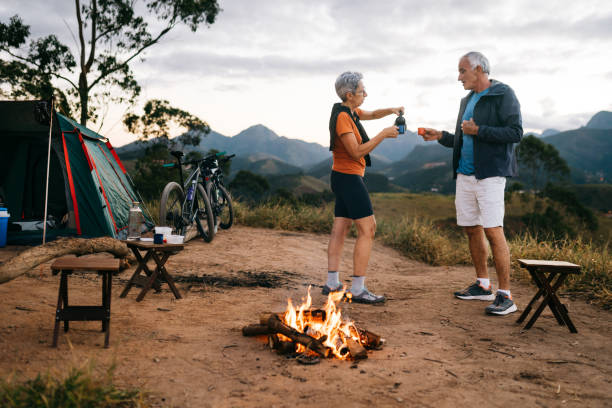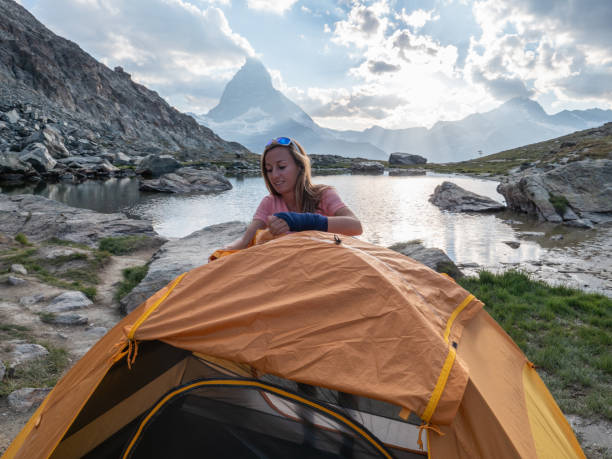There’s something deeply satisfying about finding the right camping tent—the kind that can weather a sudden storm, give you breathing space when you’re stuck inside for hours, and not test your patience during setup. Over the last year, we’ve tested a wide range of tents—from snow-dusted alpine ridges to muggy summer forests. Some wowed us with their quick-pitch design, others with rock-solid build quality. But only a select few made the final cut. Whether you’re planning a solo trek or a family getaway, here are the seven best camping tents for all seasons based on our actual camping trips. We’ve hiked with them, slept through storms, and packed them up in a hurry. These all weather camping tents aren’t just gear—they’re trusted companions.
Table of Contents
- CAMEL CROWN Backpacking Tent
- Purebox Tent for Camping
- Big Agnes Mountaineering Tent
- ALPS Mountaineering Tasmanian Tent
- Coleman Evanston Camping Tent
- FanttikOutdoor Camping Tent
- MSR Access 4-Season Tent
- Our Verdict!
- How to Choose the Best Camping Tents for All Seasons
- Weather Resistance (Rain, Wind, Snow)
- Ventilation and Condensation Control
- Ease of Setup and Portability
- What are 4-season tents?
- Do tents get hot in summer?
- Are tents 100% waterproof?
7
CAMEL CROWN Backpacking Tent
We used the CAMEL CROWN Backpacking Tent on a casual car camping weekend by the river. This isn’t a backpacking tent, despite the name—it’s a spacious cabin-style setup that’s ideal when weight isn’t a concern. With dimensions of 120 x 108.5 x 77 inches, it felt like a mini apartment inside.
We comfortably fit our queen-sized self-inflating mattress, two camp chairs, and still had space for gear. The PU2000 waterproof Oxford fabric held strong through an unexpected downpour, and the fiberglass poles and windproof ropes kept it upright and steady, proving it to be standing among the best tents for all weather camping.
Setting it up was easy—everything fit into a compact storage bag, and the pull-door curtain design gave us extra flexibility for lounging. It’s not for hardcore hikers, but for family or drive-in trips, the value is outstanding. We loved the cabin feel—spacious, comfy, and no wrinkly fabric getting in our way.
Pros:
- Hassle-free setup within ten minutes.
- It comes with a rain fly to cover the screens.
- A great temporary tent for festivals.
Cons:
- The instructions may be hard to read.
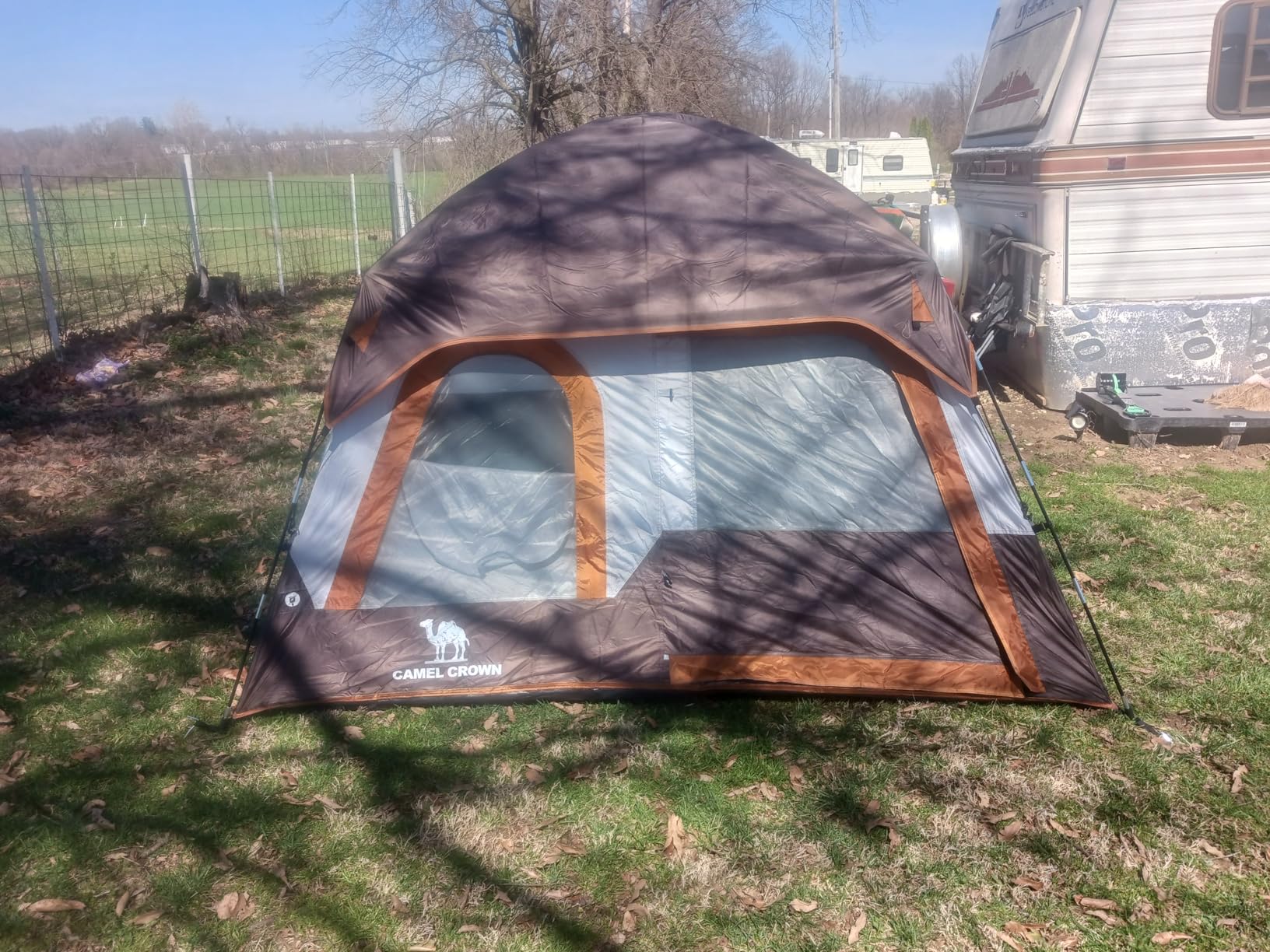
6
Purebox Tent for Camping
Easiest Setup. This was our go-to for a solo overnight hike on the Appalachian Trail. The Purebox Tent for Camping is ultralight, but it doesn’t sacrifice space. At over 82 inches long, it had more than enough room for me, my sleeping pad, and my pack. The top cross-beam design added headroom too, so I could sit up comfortably.
Weather turned nasty that night—cold rain and gusty wind. Still, not a drop got in. The 4000mm-rated silicone-coated nylon, taped seams, and wind-shedding rainfly were rock solid, which qualifies it as an all-season tents. Assembly was a breeze, thanks to the 7001 aluminum alloy poles, and the tent stayed taut and secure.
Bonus points for the smart storage—mesh pockets, ceiling hook, and reflective guylines all came in handy. I ended up keeping this tent for myself instead of passing it on to my son—it’s just that good. For under $100? An absolute steal.
Pros:
- It’s a high-quality nylon construction.
- Sets up and tears down very easily.
- Comes with great overall value.
Cons:
- No footprint included, that’s one downside!
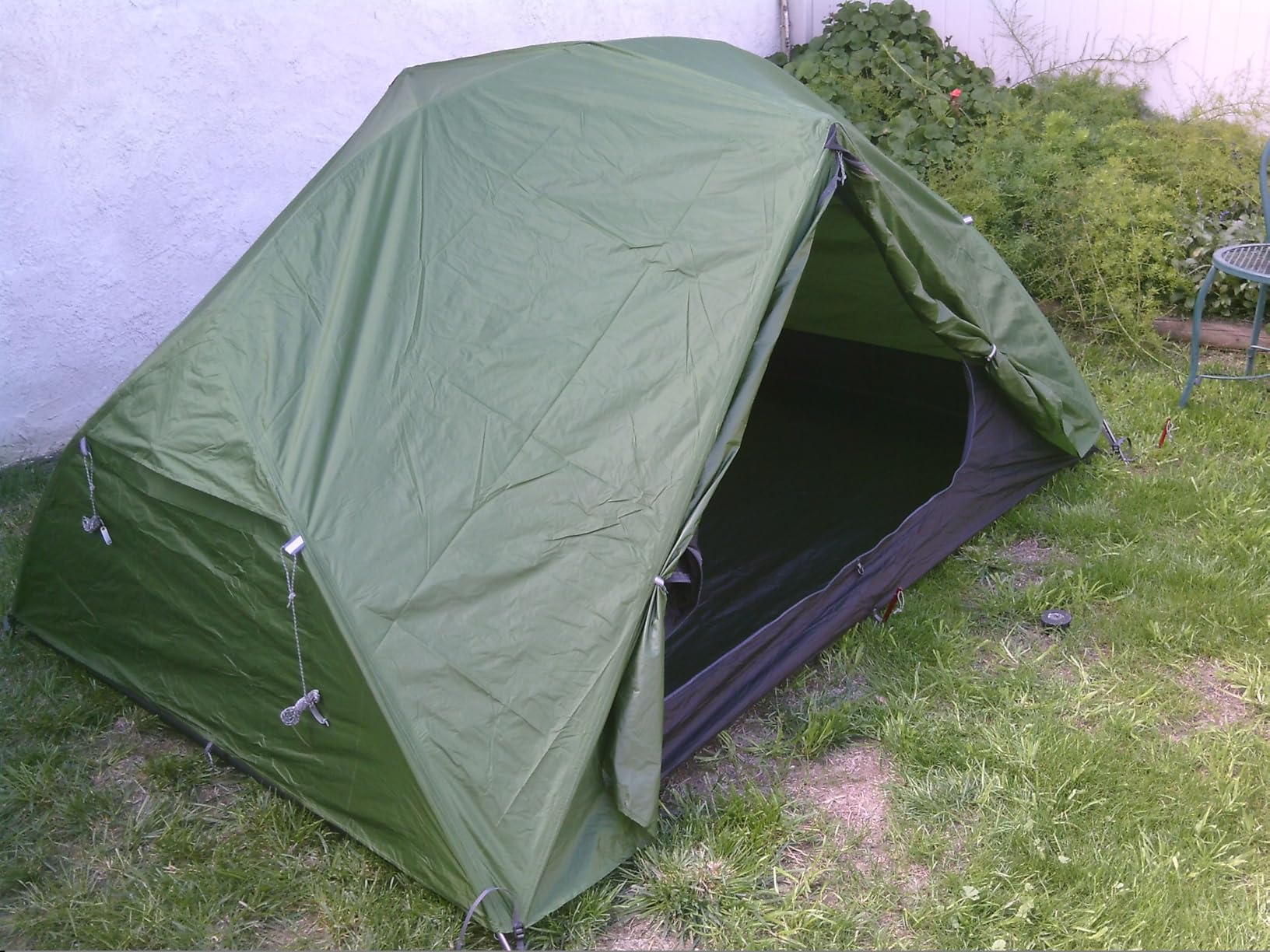
5
Big Agnes Mountaineering Tent
Best Fabric Quality. We took this one high into the Colorado backcountry where the weather turns in a blink. The Big Agnes Mountaineering Tent is no ordinary tent—it’s expedition-ready. From thicker poles to glove-friendly zippers, everything’s built with tough conditions in mind.
At base camp, snow rolled in overnight, and this tent didn’t sag or shift. The double-wall design, ripstop nylon, and breathable fabric trapped warmth inside without condensation. We were surprised how roomy it felt—waiting out the storm didn’t feel claustrophobic at all.
The double vestibules gave us ample storage for gear, and the internal closable ceiling window was genius for airing out wet clothes. While it’s a premium pick, it’s worth every penny if you’re venturing off-grid in unpredictable conditions.
P.S. Feel free to check out our roundup of the best camping tents for 2025!
Pros:
- The tent is constructed from breathable nylon.
- The fabric is thick and sturdy.
- It also includes a large ceiling window.
Cons:
- A user reported some quality issues.
4
ALPS Mountaineering Tasmanian Tent
This tent joined us on a challenging spring hike through the Pacific Northwest—wind, rain, and all. The ALPS Mountaineering Tasmanian Tent didn’t flinch. It’s a 4-season tent with serious backbone: shock-cord aluminum poles, 5000mm floor coating, and fully closable vents kept us dry and warm during a nasty night on the trail.
Despite the weight (just under 8 lbs), it was surprisingly easy to set up with snap-on pole clips and freestanding design. We especially loved the dual vestibules—ideal for stashing wet gear and even cooking during a drizzle.
Inside, the mesh storage pockets and gear loft kept our essentials in reach, and #8 zippers handled the abuse of muddy hands. It’s a beast of a tent, best suited for two people sharing the load. Would we take it solo again? Maybe not. But for challenging weather with a partner? Absolutely.
You might also want to take a look at this review by Life with Kernel Lee on YouTube!
Pros:
- The setup takes max 15 mins.
- The tent was warm and cozy in cold temps.
- We loved the double vestibules.
- One of the best all season tents!
Cons:
- A user faced quality lapse.
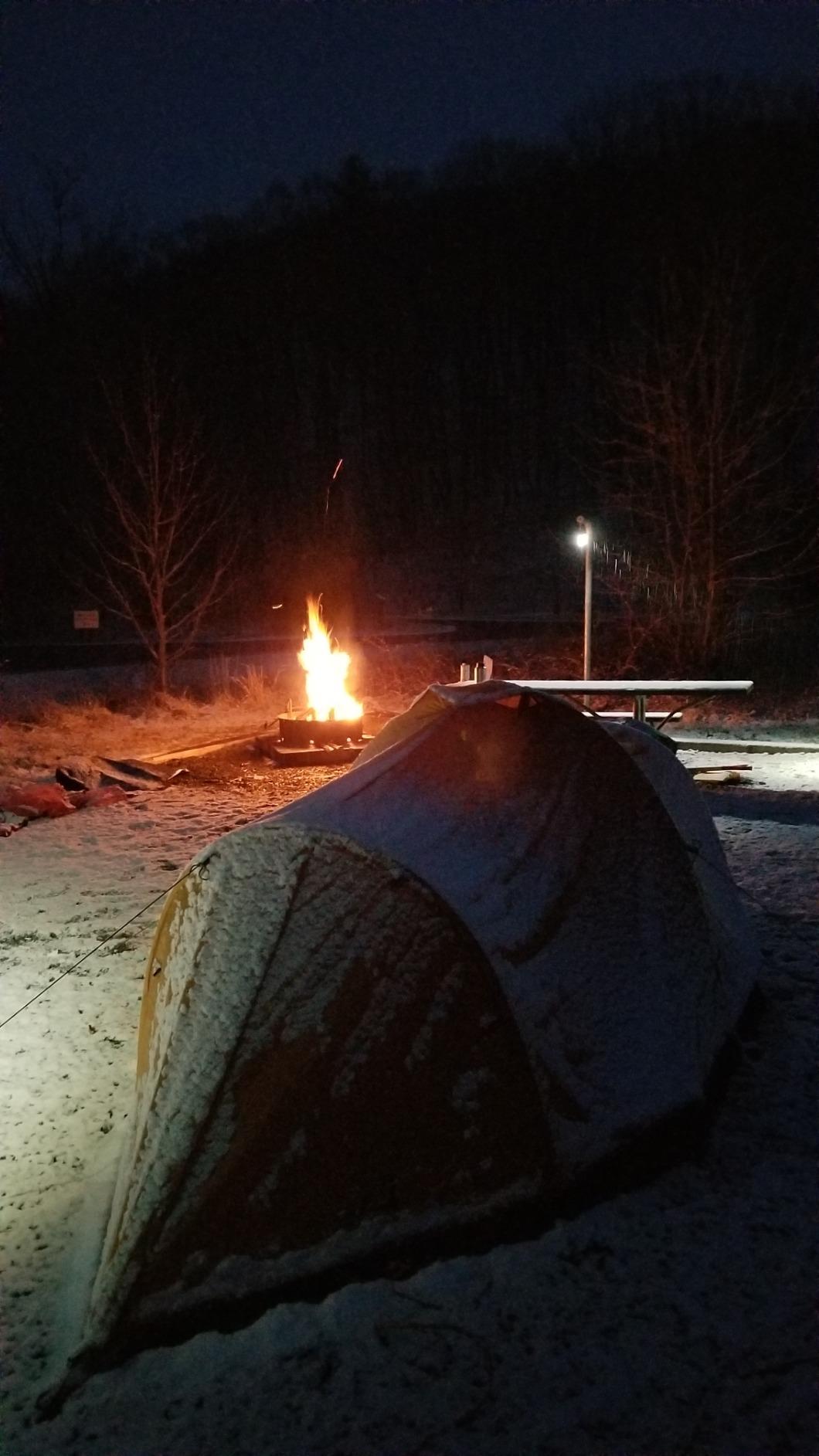
3
Coleman Evanston Camping Tent
We took the Coleman Evanston Camping Tent out for a weekend trip with friends at Yosemite. Six of us, two queen airbeds, and a dog—this tent fit us all. And here’s the kicker: my 6’3” buddy could stand upright in the center.
Setup was around 15 minutes with snag-free pole sleeves, and we really appreciated the screen room, which became our bug-free hangout zone. The WeatherTec system lived up to the hype—welded floors and protected seams kept us dry during an overnight drizzle.
The electrical port came in handy for powering our portable fan, and the carry bag fit everything back in with room to spare (rare!). For a tent under $120, this one punches way above its weight. The zippers felt sturdy, especially on the porch area, which sees a lot of traffic. If you’re camping with a crew on a budget, the Evanston is a no-brainer.
Pros:
- Easy to set up with lots of tie downs.
- The delivery was fast and packed safely.
- We got bang for the buck.
Cons:
- It may require added waterproofing.
2
FanttikOutdoor Camping Tent
When we rolled up to our drive-up campsite at Lake Tahoe, we were racing daylight. Thankfully, the FanttikOutdoor Camping Tent really does set up in under a minute. With pre-installed poles and a smart layout, we had it standing before the s’mores were even unwrapped.
We fit a queen-size air mattress inside with plenty of room left for our bags and even a small folding table. The ceiling mesh let us stargaze while tucked in, and the ventilation system—mesh windows on all four sides plus vents near the floor—kept things fresh even during a muggy evening.
When a surprise downpour hit, the rain leak guard near the door zipper and carbon steel frame held up beautifully. Not a drop inside. We loved the SBS zippers, mesh pockets, and power cord port—super thoughtful features. Honestly, this tent made our family trip feel more like glamping than roughing it.
Feel free to browse the official website of the brand for plenty of more options!
Pros:
- It offers excellent visibility and ventilation.
- Easily fitting 4 to 6 people.
- High durability and seamless stability.
- Quicker delivery compared to other options.
Cons:
- Setting up the poles takes some good effort.
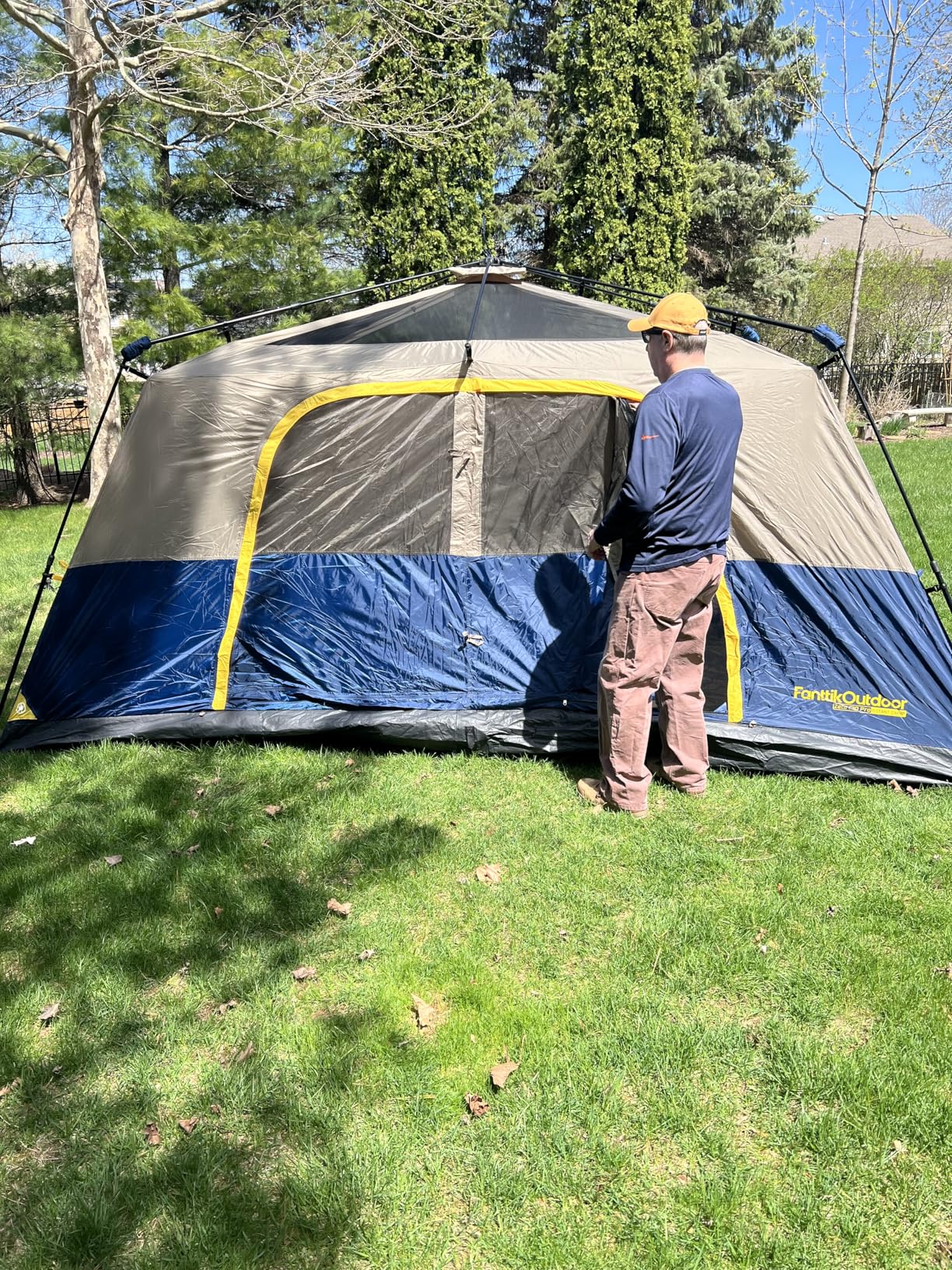
1
MSR Access 4-Season Tent
Best Overall. We took the MSR Access 4-Season Tent on a winter backpacking trip in the Rockies, and let’s just say—this tent proved itself on night one. Temperatures dropped into the teens, and gusts of icy wind rattled everything… except our tent. The Easton Syclone poles—made from aerospace composite—stood their ground like champs.
Setup was refreshingly quick, even with gloves on. The central support frame made it roomy enough for two people and our gear, and the limited mesh helped lock in warmth.
Despite freezing conditions, we woke up warm and dry—no condensation to be seen. The Xtreme Shield waterproof coating really does its job, and the vestibules had just enough room for our boots and packs. It’s lightweight at just under 4 lbs, and packs down small, making it a dream for backcountry winter trips. This tent was a serious game-changer. If you’re venturing into the alpine, the MSR Access is worth every cent.
Pros:
- It’s easy to set up and take down quickly.
- A spacious camping tent.
- Offers nice quality for the money spent.
Cons:
- It’s tricky to put it back in the carry bag.
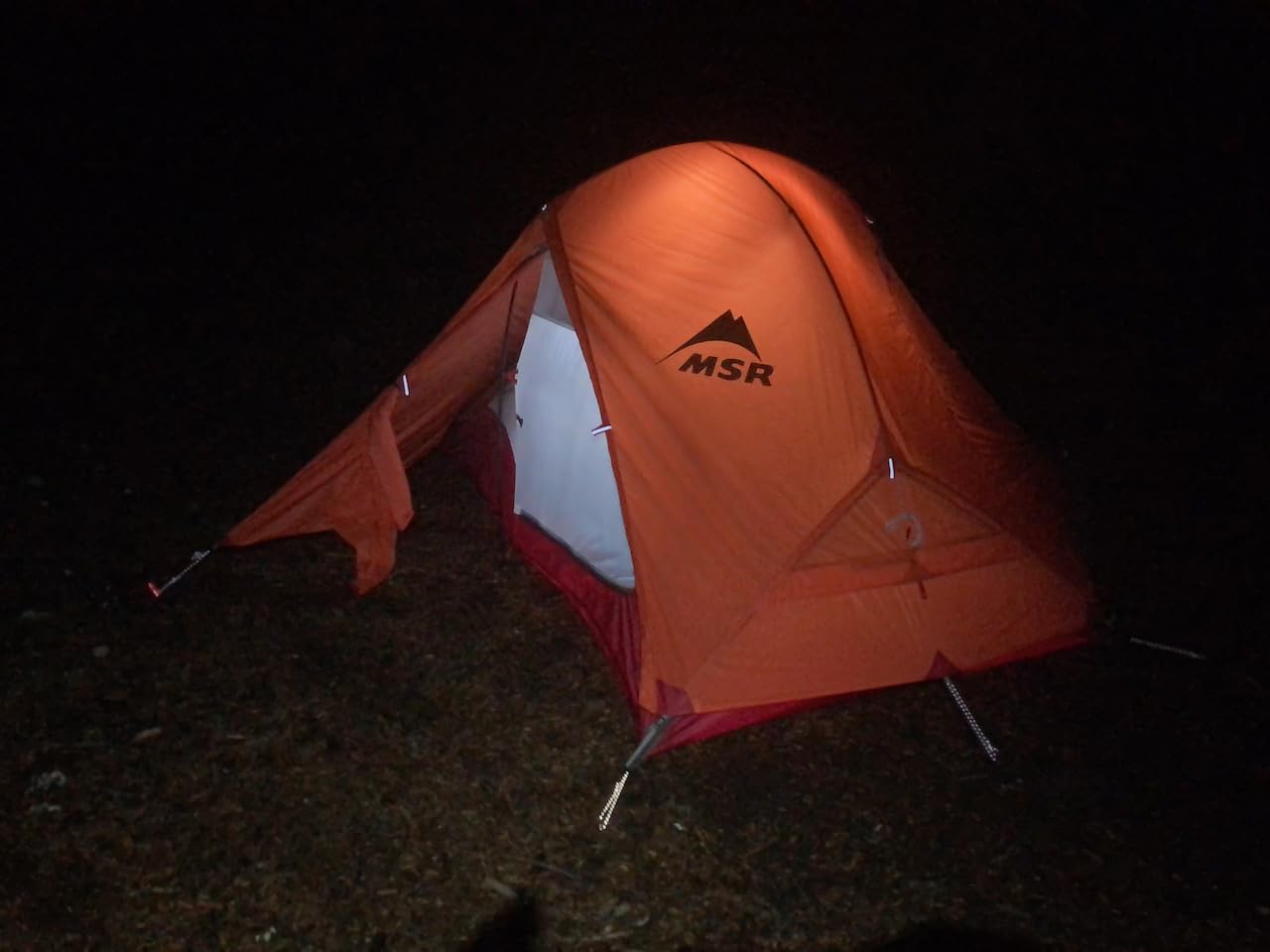
Our Verdict!
We found the MSR Access 4-Season Tent as the Best Overall choice among all weather camping tents. Of course, it was the undisputed winner for us given its extraordinary performance. Having said that, there were other options that stood out too with some interesting benefits. See them below.
- Best fabric quality: Big Agnes Mountaineering Tent
- Easiest setup: Purebox Tent for Camping
How to Choose the Best Camping Tents for All Seasons
Choosing the best all season camping tents requires you to do some research and look for factors that actually allow the tent to tough out any weather condition. Let’s see three key features to focus on when choosing an all weather tent for camping.
1) Weather Resistance (Rain, Wind, Snow)
A true all-season tent must handle a variety of conditions—from summer thunderstorms to winter snowfall. Look for:
- High waterproof ratings (at least 2000mm for rainfly and floor)
- Strong pole structures (aluminum is ideal for wind/snow load)
- Full-coverage rainfly and sealed seams
This ensures you stay dry, warm, and protected when nature gets rough.
2) Ventilation and Condensation Control
All-season camping means managing both heat and cold. A great tent balances insulation and airflow with:
- Adjustable vents and mesh panels to prevent stuffiness in summer
- Double-wall construction to reduce condensation in colder months
- Closable windows or vents to seal out wind when needed
3) Ease of Setup and Portability
Whether you’re car camping or backpacking in changing conditions, setup matters—especially in bad weather.
- Look for freestanding designs with color-coded poles
- Prioritize lightweight materials (under 8 lbs for backpacking)
- Choose tents that pack down small but don’t compromise on durability
What are 4-season tents?
4-season tents are designed to withstand harsh weather conditions year-round, including heavy snow, strong winds, and cold temperatures. They feature robust materials, reinforced poles, and minimal mesh to retain warmth. Unlike 3-season tents, they prioritize protection over ventilation.
Do tents get hot in summer?
Yes, all weather camping tents can get hot in summer, especially in direct sunlight. Heat builds up quickly inside due to limited airflow and trapped warm air. Choosing a tent with good ventilation, mesh panels, and a reflective rainfly helps keep it cooler.
Are tents 100% waterproof?
No, most tents are water-resistant, not 100% waterproof. They can handle rain well if they have sealed seams, a good rainfly, and proper waterproof ratings. However, extreme or prolonged exposure can still lead to leaks if the tent isn’t maintained or set up correctly.
